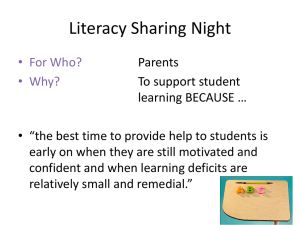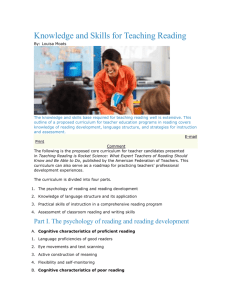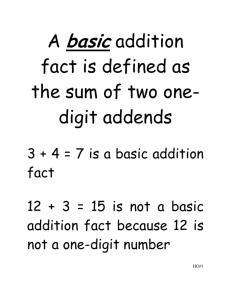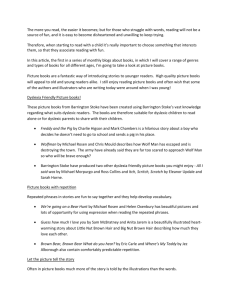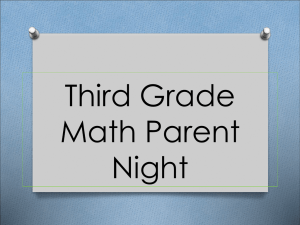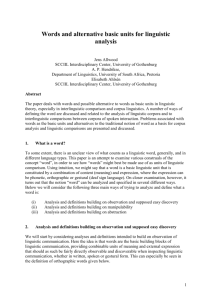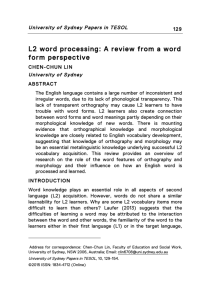RAVE-O
advertisement
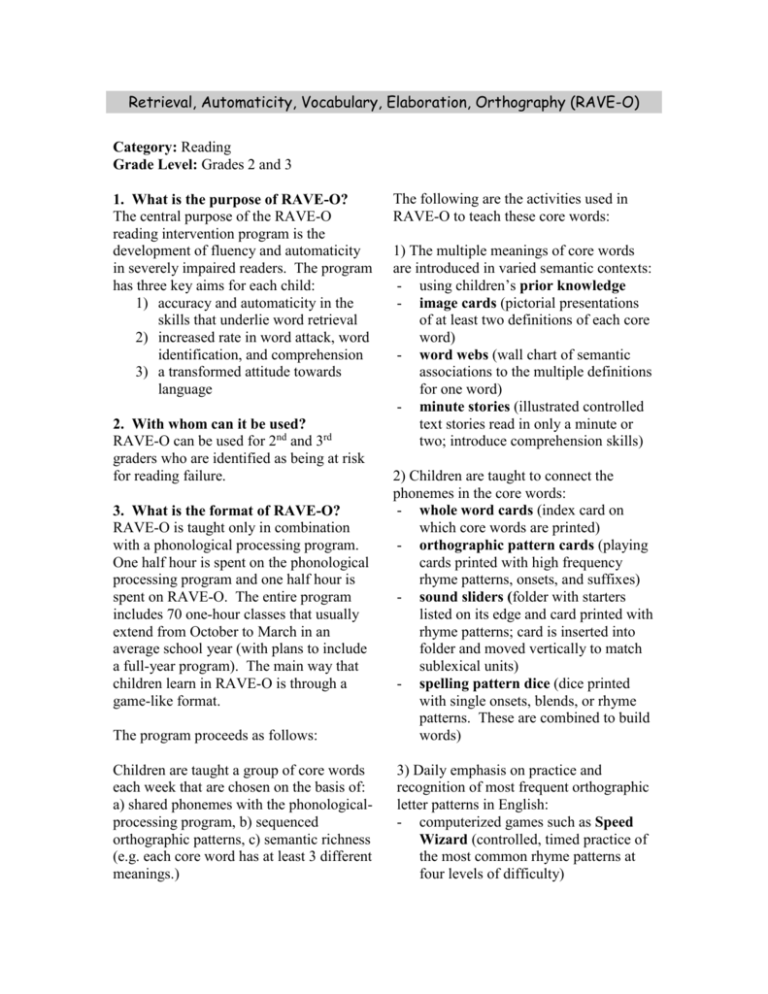
Retrieval, Automaticity, Vocabulary, Elaboration, Orthography (RAVE-O) Category: Reading Grade Level: Grades 2 and 3 1. What is the purpose of RAVE-O? The central purpose of the RAVE-O reading intervention program is the development of fluency and automaticity in severely impaired readers. The program has three key aims for each child: 1) accuracy and automaticity in the skills that underlie word retrieval 2) increased rate in word attack, word identification, and comprehension 3) a transformed attitude towards language 2. With whom can it be used? RAVE-O can be used for 2nd and 3rd graders who are identified as being at risk for reading failure. The following are the activities used in RAVE-O to teach these core words: 1) The multiple meanings of core words are introduced in varied semantic contexts: - using children’s prior knowledge - image cards (pictorial presentations of at least two definitions of each core word) - word webs (wall chart of semantic associations to the multiple definitions for one word) - minute stories (illustrated controlled text stories read in only a minute or two; introduce comprehension skills) The program proceeds as follows: 2) Children are taught to connect the phonemes in the core words: - whole word cards (index card on which core words are printed) - orthographic pattern cards (playing cards printed with high frequency rhyme patterns, onsets, and suffixes) - sound sliders (folder with starters listed on its edge and card printed with rhyme patterns; card is inserted into folder and moved vertically to match sublexical units) - spelling pattern dice (dice printed with single onsets, blends, or rhyme patterns. These are combined to build words) Children are taught a group of core words each week that are chosen on the basis of: a) shared phonemes with the phonologicalprocessing program, b) sequenced orthographic patterns, c) semantic richness (e.g. each core word has at least 3 different meanings.) 3) Daily emphasis on practice and recognition of most frequent orthographic letter patterns in English: - computerized games such as Speed Wizard (controlled, timed practice of the most common rhyme patterns at four levels of difficulty) 3. What is the format of RAVE-O? RAVE-O is taught only in combination with a phonological processing program. One half hour is spent on the phonological processing program and one half hour is spent on RAVE-O. The entire program includes 70 one-hour classes that usually extend from October to March in an average school year (with plans to include a full-year program). The main way that children learn in RAVE-O is through a game-like format. 4) Simultaneous emphasis on vocabulary and retrieval: - a set of metacognitive strategies called the Sam Spade Strategies (computer program for finding elusive but known words) 4. In what types of settings should RAVE-O be used? RAVE-O should be used in an intensive, small-group, pull-out setting. This approach allows teachers to build an environment that fosters the growth of emotional and motivational components that are essential to a changed attitude towards learning to read. Taken from website: http://www.bdainternationalconference.org /presentations/fri_k_k1_5.htm 4. Wolf, M., O’Rourke, A.G., Gidney, C., Lovett, M., Cirino, P., & Morris, R. (2002). The second deficit: An investigation of the independence of phonological and naming-speed deficits in developmental dyslexia. Reading and Writing, 15, 43-72. 5. Manis, F.R., Doi, L.M., & Bhadha, B. (2000). Naming speed, phonological awareness, and orthographic knowledge in second graders. Journal of Learning Disabilities, 33, 325-333. Reviewed by: Abigail Naguiat 5. To what extent has research shown RAVE-O to be useful? There has not been much research to date showing the usefulness of RAVE-O. However, preliminary analyses have revealed significant gains in word attack, word identification, oral reading rate and accuracy, and passage comprehension. Furthermore, the framework upon which the RAVE-O program is built has been verified by research. References: 1. Wolf, M. & Katzir-Cohen, T. (2001). Reading fluency and its intervention. Scientific Studies of Reading, 5, 211-239. 2. Wolf, M., Miller, L., & Donnelly, K. (2000). Retrieval Automaticity, Vocabulary, Elaboration, Orthography (RAVE-O): A comprehensive, fluencybased reading intervention program. Journal of Learning Disabilities, 33, 334359. 3. Wolf, M., & O’Brien, B. On issues of time, fluency, and intervention. 5th BDA International Conference.
